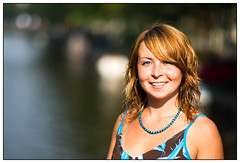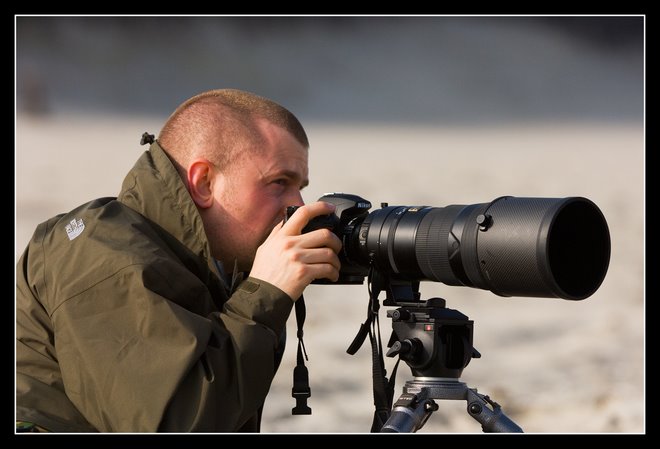Nikon has had two 85mm AF portrait lenses for a number of years - one that has a F/1.8 maximum aperture, and the other with a F/1.4. At first, with the exception of the aperture, the main difference between these lenses is the price - the 1.8 comes in at around €400, whereas the 1.4 is three times the price, at around €1150. But there is a lot more to the 1.4 - having a wider aperture lets approx 50% more light in than with the 1.8, and this means for a brighter viewfinder image when focusing, as well as a more useful lens for low light photography. The 1.4 also has a more pro build to it - the majority of the construction is a dappled metallic finish (similar to the 105mm DC), whereas the 1.8 is primarily plastic. And the 1.4 also takes the pro standard 77mm, whereas the 1.8 takes a 62mm filter.
Since the introduction of the of the DX format digital SLR, 85mm lenses have fallen out of favor with some photographers, feeling the 85mm lens (which becomes 127mm after the DX conversion) is a little too long to be used as a portrait lens, and this is part of the reason that they can be picked up on eBay relatively cheaply (I think I paid around €550 for mine a couple of years ago.) This is likely to change shortly though, as Nikon has now announced the full frame D3, so the 85mm becomes an 85mm lens again....
Probably the main selling point for the 85mm F/1.4, and the reason for it's nickname, 'the cream machine', is the bokeh that this lens can produce. Bokeh is a Japanese term for the area of the photo which is thrown out of focus through the depth of field used in the image, or basically the blurry bit.

Bokeh depends on two things - the aperture used, and the distance between the subject and the background - the wider the aperture, the better the bokeh, and the further the distance between subject and background, the better the bokeh. The examples accompanying this blog both show good bokeh - the first one of SIgal was shot at F/3.2, whereas the second one of Natalia was shot wide open at F/1.4.
The use of bokeh in a portrait helps the viewer to focus on the subject without the distractions of the background clouding his vision, and the 85mm F/1.4 allows just this - the autofocus parts of the image just melt into one another, making the background barely recognisable.
The F/1.4 is known as a superior performer, providing images that are sharp and contrasty. It is sharp all the way to F/1.4, and should be in every portrait and wedding photographer's arsenal of tools. Although this lens focuses relatively quickly on any modern Nikon body, due to the wide aperture and the amount of light that is available to assist the camera, if I have wish for the following release of this beautiful lens, it would be to add AF-S to the list of features.







2 comments:
Nice article, it helped me understand a few things, but I still have a question. If the 85mm becomes the equivalent of 127mm, then what is the appropriate lens to get for the same qualities in the DX format? I have a 500 1.8 and I like it a lot but I wish I could stand a little farther away from the subject sometimes.
You could use the 60mm and that would be similar to the 85mm scope, but you might be better with the 24-70 that Nikon are about to release.....
Post a Comment